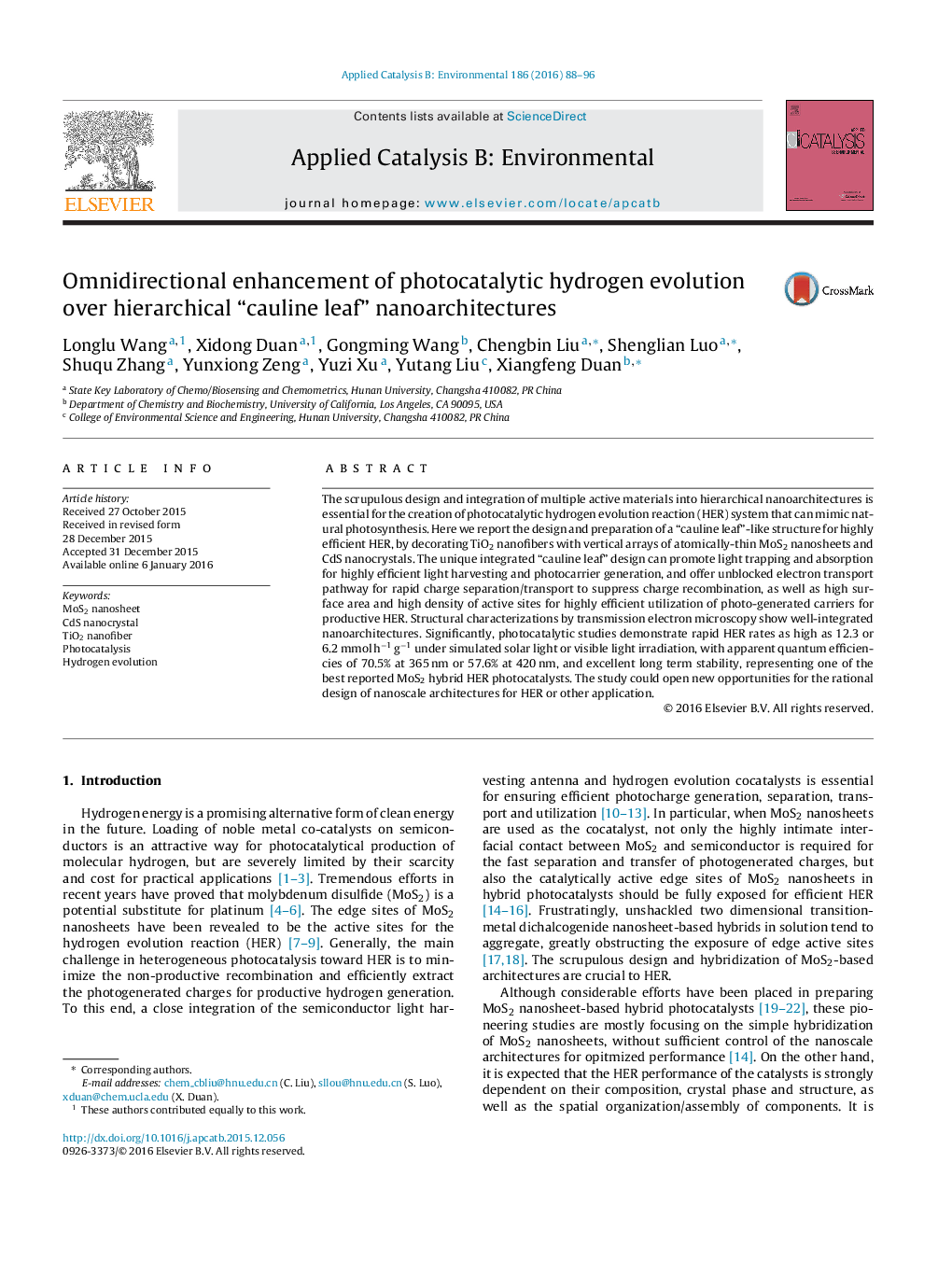| Article ID | Journal | Published Year | Pages | File Type |
|---|---|---|---|---|
| 44834 | Applied Catalysis B: Environmental | 2016 | 9 Pages |
•Well-integrated “cauline leaf” architecture with multiple active materials.•Omnidirectional enhancement of photocatalytic hydrogen evolution.•High HER rate and apparent quantum efficiency.•Excellent long term stability of HER.
The scrupulous design and integration of multiple active materials into hierarchical nanoarchitectures is essential for the creation of photocatalytic hydrogen evolution reaction (HER) system that can mimic natural photosynthesis. Here we report the design and preparation of a “cauline leaf”-like structure for highly efficient HER, by decorating TiO2 nanofibers with vertical arrays of atomically-thin MoS2 nanosheets and CdS nanocrystals. The unique integrated “cauline leaf” design can promote light trapping and absorption for highly efficient light harvesting and photocarrier generation, and offer unblocked electron transport pathway for rapid charge separation/transport to suppress charge recombination, as well as high surface area and high density of active sites for highly efficient utilization of photo-generated carriers for productive HER. Structural characterizations by transmission electron microscopy show well-integrated nanoarchitectures. Significantly, photocatalytic studies demonstrate rapid HER rates as high as 12.3 or 6.2 mmol h−1 g−1 under simulated solar light or visible light irradiation, with apparent quantum efficiencies of 70.5% at 365 nm or 57.6% at 420 nm, and excellent long term stability, representing one of the best reported MoS2 hybrid HER photocatalysts. The study could open new opportunities for the rational design of nanoscale architectures for HER or other application.
Graphical abstractFigure optionsDownload full-size imageDownload as PowerPoint slide
